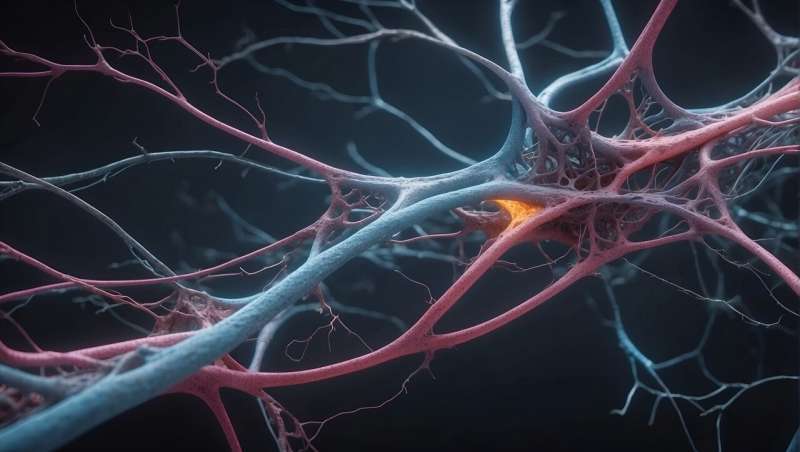New Research on Brain Receptor Offers Hope for Treating Neuropathic Pain

Emerging research highlights the role of the brain protein GluD1 in the development and potential treatment of neuropathic pain, offering hope for safer, effective therapies.
Pain is a fundamental sensation that typically signals injury or harm, such as a stubbed toe or a sprained ankle, and usually subsides as healing occurs. However, in certain conditions, pain persists without an apparent cause, becoming a chronic and debilitating experience known as neuropathic pain. This form of pain can feel like burning, electric shocks, or even phantom limb sensations, making everyday life difficult for those affected.
Neuroscientists studying pain pathways in the brain and spinal cord have uncovered insights into how molecular changes can alter pain perception over time. Unlike typical pain resulting from injury, neuropathic pain stems from damage or dysfunction within the nervous system itself, causing it to misfire and amplify pain signals. This abnormal wiring contributes not only to physical suffering but also to emotional distress, including depression and anxiety, significantly impacting quality of life.
It is estimated that around 10% of the U.S. population suffers from neuropathic pain, with cases rising due to age-related conditions, diabetes, cancer treatments, and spinal cord injuries. Despite its widespread prevalence, effective treatments are limited, and many patients rely on opioids, which carry risks such as addiction and adverse side effects.
Recent research has focused on a brain protein called GluD1, or glutamate delta-1 receptor, which was previously overlooked. This receptor functions as a scaffold, organizing synapses—the contact points between neurons—contributing to how neural circuits develop and adapt, especially in areas involved in pain and emotion.
Disruptions in GluD1 activity are linked to persistent pain states. Scientists have found that GluD1 forms a partnership with the protein cerebellin-1, creating a structural bridge critical for maintaining proper communication between neurons. In cases of chronic pain, this connection becomes unstable, leading to chaotic neural signaling that heightens pain sensitivity.
Encouragingly, restoring GluD1 activity in experimental models has shown promise in alleviating pain. For example, administering cerebellin-1 was able to reactivate GluD1, reducing chronic pain without the side effects associated with opioids. These findings suggest that therapies targeting GluD1 could recalibrate neural circuits, offering a new approach to pain management that is potentially safer and more effective.
While this research is still in early stages, it opens the possibility of developing treatments that repair the underlying neural architecture contributing to neuropathic pain. Such advancements could revolutionize how we approach chronic pain, shifting from symptom masking to addressing the root causes within the brain's pain networks.
Stay Updated with Mia's Feed
Get the latest health & wellness insights delivered straight to your inbox.
Related Articles
Enhancing Patient Outcomes Through Routine Breast Cancer Screening
Routine breast cancer screening significantly improves patient outcomes by enabling early detection, reducing disease severity, and decreasing mortality rates. Recent research advocates for broader screening initiatives to save lives.
Study Finds Tumor-Related Epilepsy Is Not a Major Prognostic Indicator in Diffuse Glioma Patients
New research indicates that tumor-related epilepsy does not serve as a significant prognostic factor in patients with diffuse gliomas, highlighting complex tumor-brain interactions affecting outcomes.
Urgent Action Needed to Bridge the Gender Disparity in Heart Attack Care, Study Warns
New research highlights the urgent need to address gender disparities in heart attack treatment in Australia, with projections indicating the gap may take a decade to close without immediate action.
CDC Staffing Disruptions Hamper HIV Research and Waste Public Funds
Recent staffing upheavals at the CDC have disrupted crucial HIV surveys, risking the loss of valuable data and wasting millions in public funds. Experts warn that these setbacks could hinder efforts to prevent and treat HIV effectively.



